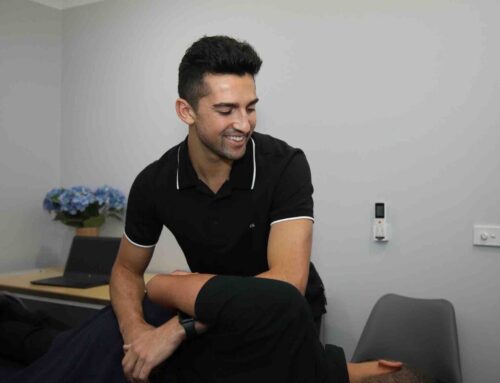What is it?

Image courtesy of www.raisingarizonakids.com
Sever’s disease is a common cause of heel pain, especially in people who are young and physically active. It is the swelling and irritation of the growth plate in the heel.
Sever’s is a self-limiting condition, which means with proper management, it usually goes away within a few months. It doesn’t cause lasting problems.
How Does it Happen?
The cause of Sever’s disease is unknown, however the disease commonly occurs during the growth spurt of puberty when children are between the ages of 8 and 14. During a growth spurt, the muscles, tendons and bones grow at different rates. If the bones are growing quicker, the muscles (particularly calf muscles) and tendons (particularly the Achilles) can become tight, pulling on the growth plate in the heel.
Physical activity can increase the pain as it increases the pull on the tight muscles and tendons.
Who Can Get It?
Sever’s disease commonly occurs in children who are:
- Between the ages of 8-14 as they go through a growth spurt.
- Physically active in sports and activities that involve running or jumping, especially on hard surfaces.
 How is it Diagnosed?
How is it Diagnosed?
Health care providers, such as Osteopaths will use a health history and physical examination to diagnose this condition. Usually, no investigations (like X-rays or CT) are required as Sever’s disease cannot be seen on x-rays, however your Osteopath may order them to rule out other problems.
How is it Treated?
- Taking pain-relieving medicine (such as ibuprofen) may help with pain and should be taken following consultation with your doctor or pharmacist. Any medication should be taken as directed on the packaging.
- Activity modification – reducing activities for a short period of time may be beneficial.
- Load management – at first, this may include a period of modified or decreased load, however load is important for the bones, muscles and tendons to heal. Soo after the initial flare up, loads should be managed so these structures remain healthy.
- Foot taping or prescribed exercises to improve neuromuscular control around the foot may be helpful.
- Seeing a podiatrist for orthotics (custom shoe inserts), may be beneficial.
- Time – the most important thing. Generally, the pain will ease in two weeks, but it can take up to 2 months. The growth plate can take up to 2 years to mature (sometimes longer), which means there may be flare ups from time to time. These can be triggered by growth spurts, changes in sporting activities, changes in footwear or changes in surface.
DO’s
- Use an ice pack or cold pack to the back of the heel for 10-15 minutes after physical activity or a flare-up.
- Use a heel raise which may help in taking the pressure off the heel growth plate and Achilles tendon.
- Massage or foam roll tight calves.
- Using heat packs on tight calves.
- Use an elastic wrap or compression sock to help with pain and swelling.
- Wear shoes that are open in the back so the heel isn’t irritated.
DON’Ts
- Avoid stretches in the initial stages.
- Avoid jumping and hopping in the initial stages.
- Keep playing sport or doing any activity through a flare up. Allow yourself to recover.

References
Better Health Channel. (2021). Sever’s disease. https://www.betterhealth.vic.gov.au/health/conditionsandtreatments/severs-disease
Nemours KidsHealth. (2019). Sever’s Disease. https://kidshealth.org/en/parents/severs-disease.html
WedMD. (2020). What Is Sever’s Disease?. https://www.webmd.com/children/severs-disease-kids-teens
Howard, R. (2014). Diagnosing and treating Sever’s disease in children. Emergency Nurse, 22(5). DOI: 10.7748/en.22.5.28.e1302




